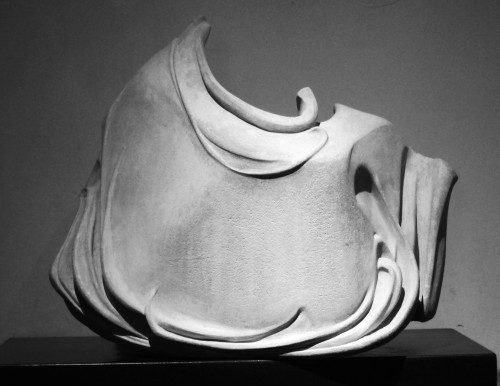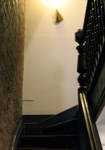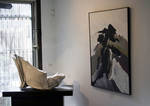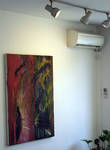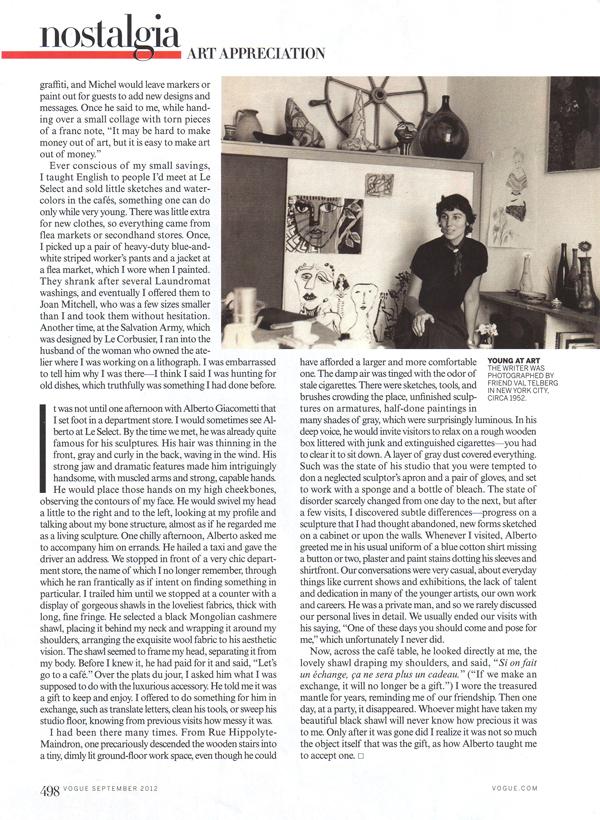American Renaissance Art
The Anita Shapolsky Gallery presents a new exhibition, “American Renaissance Art”, opening Saturday, January 26. The opening reception is Saturday, January 26, from 3-6 PM. The exhibition will run through March 16, 2013. Click to access the American Renaissance Art Press Release.
The American Abstract Art movement was the epiphany of the individual. He was the center of the painting-of his universe. The art of the Abstract Expressionists is timeless, as has been proven by the auction world since the 50’s. There are other styles and movements, but none that can compare.
James Dinerstein. A New York native, Dinerstein graduated from Harvard. He studied with art historian and critic Michael Fried. He worked at St. Martin’s Art School in London with sculptors Anthony Caro and William Tucker. Dinerstein aims to restore the resources of plasticity and mass while manifesting the spiritual potency of Greek antiquity and musical polyphony. His recent work is more organic, primal, and overtly sensuous as it emerges from a deeper and freer source.
Amaranth Ehrenhalt. After 38 years in France and Italy, Ehrenhalt returned New York in 2008. In N.Y. during the 50’s she was friendly with Al Held, Ronald Bladen, and Willem de Kooning. She has exhibited with Sam Francis, Joan Mitchell, Shirley Jaffe and others in Paris. Ehrenhalt’s work expands beyond the canvas to include drawings, prints, watercolors, tapestries, mosaics, murals, sculptures, poetry, prose and more. In order to experience the surprises and treasures of Ehrenhalt’s art, it must be seen and digested by the viewer.
William Manning. Manning began working in black and white before moving on to collage. His paper pieces are the foundation of his work and are based on the environment of his native Maine. The subject for his delicate line drawing and expressive collage is the cycling of nature, including the seasons, weather, and the sun’s light. After 1975, he transitioned from flat to three-dimensional standing and wall paintings that allowed for multiple viewpoints. His newer work of collage on panels uses his boldest, richest colors combined with an array of gestural and geometric elements.
Joe Overstreet. Born in Conehatta, Mississippi, Overstreet’s family migrated to San Francisco. He attended the San Francisco Art institute under the mentorship of Sargent Johnson. He moved to New York in 1958 and was incorporated into the New York School as one of its younger members alongside Norman Lewis, Hale Woodruff, and Romare Bearden. His work thematically challenges dimensional boundaries. Overstreet experimented with steel mesh and wire, combining and unraveling them with paint in a reference to the human condition. His new work is more sublime.
Nancy Steinson. Born in Louisville, Kentucky, Steinson came to New York and became an abstractionist influenced by Constantin Brancusi, Barbara Hepworth, and Ben Nicholson. Liberating, purely geometric structures expressing movement, direction, space and scale characterize her art. Her work is almost exclusively, except in works on paper, formed with curved planar forms and linear straight edges which suggest a more organic approach to form as opposed to the industrial purity of early minimalism.
Alison Weld. Weld’s paintings exude a passionate and visceral, yet clearly informed visual intelligence. In each mark and gestural working of the paint, she manifests a personal presence calculated to engage the viewer in a process of discovery. Each of her paintings makes an individualized statement while referencing others. The totality of artistic tension and resolution throughout her body of work points to the complexities of the world we all live in.
Click images to view full work information and enter slideshow view.
Click to view installation shots of the show.



